Sanwa PM11 Handleiding
Sanwa
Multimeter
PM11
Bekijk gratis de handleiding van Sanwa PM11 (1 pagina’s), behorend tot de categorie Multimeter. Deze gids werd als nuttig beoordeeld door 47 mensen en kreeg gemiddeld 4.9 sterren uit 24 reviews. Heb je een vraag over Sanwa PM11 of wil je andere gebruikers van dit product iets vragen? Stel een vraag
Pagina 1/1

– 30 –
◎Accuracy calculation
True value :Measurement DCV
Displayed value :100.0 mV
Accuracy :400 mV Range ···· (0.8% rdg+4 dgt)±
Error :
± ±(100.0 [mV] x 0.8% + 4 [dgt] ) = 1.2 [mV]
For example :100.0 [mV] ± 1.2 [mV] (In a range of
98.8~101.2 mV)
※ 4 [dgt] in the 400 mV range corresponds to 0.4 mV
Specifications and external appearance of the product
described above may be revised for modification without
prior notice.
– 29 –
rdg : reading dgt : digits
※Accuracy in the case of sine wave AC.
400.0 Ω
4.000 kΩ
±(2.0% rdg+4 dgt)
Ω Ω40.00 k
Resistance
400.0 kΩ
4.000 MΩ±(3.5% rdg+4 dgt)
40.00 M (10% rdg+5 dgt)Ω±
Chcking
Continuity
Testing • Open voltage between input terminals is about the same
Diode as the voltage of battery.
Open voltage between input
terminals.
400 Ω range: Approx 1.2 V
Other range: Approx 0.45 V
※
Test lead
RED: Negative Output
BLACK: Positive Output
※The measuring current changes
according to the resistance of
the resister to measure.
• Buzzer sounds at approx. 35 max.Ω
• Open voltage : approx. 1.2 V
※Test lead RED: Negative Output
※Test lead BLACK: Positive Output
– 28 –
8–2 Measurement Range and Accuracy
Accuracy assurance range: 23 C 80%RH max.±5°
No condensation.
Function Range Accuracy
Input Resistance
Remarks
400.0 mV ±(0.8% rdg+4 dgt) ≧100 MΩ
4.000 V Approx.
11 MΩ
±(1.3% rdg+4 dgt)
Approx.
10 MΩ
4.000 V Approx.
11 MΩ
±(2.3% rdg+8 dgt) Approx.
10 MΩ
Accuracy in
the case of sine
wave AC:
45 Hz ~ 1 kHz
※
(DCV)
(ACV)
40.00 V
400.0 V
500 V
40.00 V
400.0 V
500 V
– 27 –
[8] SPECIFICATIONS
8–1 Ge era S eci icationsn l p f
Measuring method
: Dual integration
Display : Cou er apnt prox. 4000 counts max.
Bar graph max. 40 s egments
Range sel tion : Auto rangeec ( •V )Ω
Over display : “OL” mark indication
Polarity : Automatic sele ction (“–” is displayed only.)
Battery discharge : If the internal battery has been consumed and
the voltage dr di la hows ops, the sp y s
) mm. Approx 117 g
Accessories : Instruction manua l
Safety : Whe n removable test pin covers are attached:
In comp requirliance with 300 V ement of
E E E -033,N61010-1, N61010-2-030, N61010-2
E -031N61010
Overvoltage Cat egory III
When removable t est pin covers are not
attached: In compliance with 500 V requirement
o If Overvoltage Category I
Installation Category (Ove oltage rv Ca egory)t Ⅱ
: Lo pplia quical Level A nces Portable E pment
Installation Category (Overvoltage Ca egt o )ry Ⅲ
: Distribution Level Fixed Installation
EMC directive, RoHS directive
: IEC61326(EMC). EN50581(RoHS).
BT
.
Sampli pprng rate : A ox. 1.3 t ime (numer pls/sec al dis ay)
Appr ime (b graox. 13 t s/ sec ar ph)
Accuracy ss it a urance temperature/humid y range
: 23 5 C 80±°% RH max.
No condensation
Operating temperature/humidity range
: 0~40 ondens ation°C 80% RH max. No c
Stora emperge t ature / humid raity nge
: –10~50 °C 70% RH max.
: No condensation
Environmental Condition
: Oper 20ating altitude <00m, Indoor use only
P 2ol io deglut n ree
Pow up LR- pier s ply : 44 2 eces
P eow r consumption
: Approx. 3.5 mW TYP (at DCV)
Auto pow ow ab mi opeer off : P er off out 30 nutes after no ration.
Dimension and Mass
: 117(
H
) x 76(
W
) x 18(
D
– 26 –
7-2 Repair
Customers are asked to provide the following information
when requesting services:
1. Customer name, address, and contact information
2. Description of problem
3. Description of product configuration
4. Model Number
5. Product Serial Number
6. Proof of Date-of-Purchase
7. Where you purchased the product
Please contact Sanwa authorized agent / distributor / service
provider, listed in our wbsite, in your country with above
information.An instrument sent to Sanwa / agent / distributor
without those information will be returned to the customer.
Note:
1) Prior to requesting repair,please check the following:
Capacity of the built-in battery, polarity of installation
and discontinuity of the test leads.
2) Repair during the warranty period:
The failed meter will be repaired in accordance with the
conditions stipulated in 7-1 Warranty and Provision.
3) Repair after the warranty period has expired:
In some cases, repair and transportation cost may become
higher than the price of the product. Please contact Sanwa
authorized agent / service provider in advance.
The minimum retention period of service functional parts
is 6 years after the discontinuation of manufacture. This
retention period is the repair warranty period. Please note,
however, if such functional parts become unavailable for
reasons of discontinuation of manufacture, etc., the
retention period may become shorter accordingly.
4) Precautions when sending the product to be repaired:
To ensure the safety of the product during transportation,
place the product in a box that is larger than the product
5 times or more in volume and fill cushion materials
fully and then clearly mark ”Repair Product Enclosed”
on the box surface. The cost of sending and returning
the product shall be borne by the customer.
7-3 SANWA web site
http://www.sanwa-meter.co.jp
E-mail: exp_sales@sanwa-meter.co.jp
– 25 –
6-4 Storage
1. The panel and the case are not resistant to volatile
solvent and must not be cleaned with thinner or alcohol.
For cleaning, use dry soft cloth and wipe it lightly.
2. The panel and the case are not resistant to heat. Do
not place the instrument near heat-generating devices
(such as a soldering iron).
3. Do not store the instrument in a place where it may be
subjected to vibration or from where it may fall.
4. For storing the instrument, avoid hot, cold or humid
places or places under direct sunlight or where
condensation is anticipated.
!CAUTION
[7] AFTER-SALE SERVICE
7-1 Warranty and Provision
Sanwa offers comprehensive warranty services to its end-
users and to its product resellers. Under Sanwa's general
warranty policy, each instrument is warranted to be free from
defects in workmanship or material under normal use for the
period of one (1) year from the date of purchase.
This warranty policy is valid within the country of purchase
only, and applied only to the product purchased from Sanwa
authorized agent or distributor.
Sanwa reserves the right to inspect all warranty claims
to determine the extent to which the warranty policy shall
apply. This warranty shall not apply to fuses, disposables
batteries, or any product or parts, which have been subject
to one of the following causes:
1. A failure due to improper handling or use that deviates
from the instruction manual.
2. A failure due to inadequate repair or modification by
people other than Sanwa service personnel.
3. A failure due to causes not attributable to this product
such as fire, flood and other natural disaster.
4. Non-operation due to a discharged battery.
5. A failure or damage due to transportation, relocation
or dropping after the purchase.
– 24 –
Set a battery with its polarities facing in the correct
directions.
!
CAUTION
Batteris when the meter is shipped:
A battery for monitoring has been installed prior to
shipment from the factory. It may be discharged before
the expiration of the described battery life.
*The battery for monitoring is a battery used to check
the functions and performance of the product.
– 23 –
〈 How to Replace
〉
Remove the battery lid screw with a screwdriver.
Remove the battery lid.
Take out the battery and replace it with a new one.
Attach the battery lid and fix it with the screw.
1. If the rear case or the battery lid is removed with
input applied to the input terminals, you may get
electrical shock. Before starting the work, always
make sure that no input is applied.
2. Before starting the work, be sure to turn OFF the
main unit power and release the test leads from
the circuit.
!
WARNING
6–3 Battery Replacement
The button-battery is made of oxidized silver, etc.
Please keep it away from little children lest they should
swallow it in.
– 22 –
[6 IN] MA TENANCE
1. This section is very ortant for safety. Read andimp
und ollowerstand the f ing instruction fully and
maintain your in rument properly.st
2.
The instrum calib insent must be rated and pected at
le o ma accurast once a year t intain the safety and acy.
!
WARNING
6–1 Maintenan nspectionce and I
1) Appearance
• Is the appea dama allrance not ged by f ing?
2) Test leads
●Ma le errke sure that the test ads are not cut, ref ing to
the section 5–1, page 12 13. ~
6–2 Calibra onti
The cali onbration an d inspection may be c ducted by
the de lea r. For more ma ion ea infor t , pl se con de letact the a r.
• e Are you having the problem with “the t st leads are
damag ab insied, and the c le core and white coating de
of the test lea exds are posed”?
(We use doub insulatio lea oule n test ds. If you c ld see
the le on ne han test ads as above c dition, you ed to c ge
the new one)
Please do not use as it is, if applicable, of the above items.
Please have it serviced.
– 21 –
Make sure that the display is the same as that when the
test leads are released.
After measurement, release the red and black test pins
from the object measured.
Judgement: When the items are normal, the and
diode is good.
●Open voltage between input terminals is about the same
as the voltage of battery.
– 20 –
Never apply voltage to the input terminals.
!
WARNING
5–5 Testing Diode
1) Application
The quality of diodes is tested.
2) How to Use
Set the function switch at range.
Apply the black test pin to the cathode of the diode and
the red test pin to the anode.
Make sure that the display shows a diode forward voltage
drop.
Apply the red test pin to the cathode of the diode and
the black test pin to the anode.
– 19 –
5–4 Checking Continuity
!
WARNING
1) Application
Checking the continuity of wiring and selecting wires.
2) How to Use
Set the function switch at range.
Apply the red and black test pins to a circuit or conductor
to measure.
The continuity can be judged by whether the buzzer
sounds or not.
After measurement, release the red and black test pins
from the object measured.
Never apply voltage to the input terminals.
(Test lead RED: Negative
Output / BLACK: Positive
Output)
●The buzzer sounds when the resistance in a circuit to
measure is less than about 35 Ω.
●The input terminals release voltage is about 1.2 V.
– 18 –
●If measurement is likely to be influenced by noise, shield
the object to measure with negative potential (
test
lead black).
●If a test pin is touched by a finger during measurement,
measurement will be influenced by the resistance in the
human body to result in measurement error.
●Open voltage between input terminals.
400Ω range: Approx 1.2 V
Other range: Approx 0.45 V
(Test lead RED: Negative Output / BLACK: Positive
Output)
– 17 –
5–3 Resistance Measurement
!
WARNING
1) Application
Resistance of resistors and circuits are measured.
2) Measuring Ranges
6 ranges from 400 to 40 MΩ Ω.
3) Measurement Procedure
Set the function switch at Ω range.
Apply the red and black test pins to an object to measure.
Read the value on the display.
After measurement, release the red and black test pins
from the object measured.
Never apply voltage to the input terminals.
– 16 –
5-2-2 ACV ( ) Measurement Maximum Rating
Input Value 500V AC
1) Applications
Measures sine-wave a.c. voltages such as lighting voltages.
2) Measuring Ranges
4 ranges from 4 V to 500 V
3) Measurement Procedure
Set the function switch at (ACV) range.
Apply the red and black test pins to the circuit to measure.
Read the value on the display.
After measurement, remove the red and black test pins
from the circuit measured.
●This instrument employs the average measurement
system and some error is made to the display of
waveforms other than sine waves.
●The accuracy guaranteed frequency range is 45 Hz to
1 kHz.
– 15 –
3) Measurement Procedure
Set the function switch at (DCV) range.
Apply the black test pin to the negative potential side of
the circuit to measure and the red test pin to the positive
potential side.
Read the value on the display.
After measurement, remove the red and black test pins
from the circuit measured.
蘆The display fluctuates when the test leads are removed.
This is not malfunction.
– 14 –
1. Never apply an input signals exceeding the
maximum rating input value.
2. Be sure to disconnect the test pins from the circuit
when changing the function.
3. Always keep your fingers behind the finger guards
on the probe when making measurements.
!
WARNING
5-2-1 DCV ( ) Measurement Maximum Rating
Input Value 500 V DC
1) Applications
Measures batteries and d.c. circuits.
2) Measuring Ranges
5 ranges from 400 mV to 500 V.
5-2 Voltage Measurement
– 13 –
S ttar
M i ain un t and test
l a ?eads dam ged
No damaged
Damaged
No
Yes
S p i n ato using t a d h ve it
repaired.
No problem.
Start measurement .
Display shows
0.0~0.4?
Check continuity of
test leads.
Short the red and black
test pins.
Set the function switch
at Ω.
– 12 –
[5] MEASUREMENT PROCEDURE
5–1 Start-up Inspection
1. Never use meter if the meter or test leads are
damaged or broken.
2. Make sure that the test leads are not cut or otherwise
damaged.
!
WARNING
The meter will beep when turning its function switch, and it is
not malfunction.
– 11 –
MEMO
– 10 –
◎How to store test leads.
Test rod of red-black test leads is let in to store space
first of all. (Lead wire is paid outside.)
Red-black lead wire of the test lead is bundled and it is
pulled toward a display and it fold in two and a folded
place is put inside the upper part of store space.
An end of lead wire is accepted inside the lower part of
store space.
–9–
◎How to fix test leads
Insert the red or black test leads in the fixing position on the
top left corner of the main unit.
–8–
◎How to open/close main unit lid (Protection cover)
To open the lid, push the button on the left side of
the main unit in the direction shown.
Open the lid.
To close the lid, push in the projection provided
inside the lid in the catch on the main unit.
Cautions :
•Keep the lid turned to the rear during measurement.
•The lid can not be closed when the test leads are
out.
•If the test leads are projecting from the test lead
storage space, the lid may not close completely.
Do not force the lid, but re-set the test leads properly.
–7–
[4] DESCRIPTION OF FUNCTIONS
○Power Switch and Function Switch
Turn this switch to turn on and off the power and
to select the functions of DCV, ACV, Ω, , .
○Battery Voltage Drop Warning Display
If the internal battery has been consumed and the
voltage drops, the display shows
BT
. If it is
flashing or lit, replace the battery with a new one.
○Auto power off
If no switch is operated for about 30 minutes after
power on, the power will automatically be turned
off and the display will become blank.
To reset the meter, remove the object to measure
from the meter and set the function switch to OFF
set the function switch again according to the
measurement and connect the object to measure.
–6–
3–2 Display
Checking continuity
display
DC measurement display Numeral data display
Minus polarity display
for numeral data
AC measurement
display
Testing diode display
Minus polarity display
for bar graph
Measurement
unit display
High speed
bar graph
Bar graph scale
Decimal point
Battery discharge
warning
–5–
[3] NAME OF COMPONENT UNITS
3–1 Multimeter, Test leads
– 4 –
[2] APPLICATION SAND FEATURE
2–1 Application
This instrument is pocket type digital multimete r
designed for measurement of weak current circuits. It
plays an impor an role in circui ry analysis by usin t t t g
additional functions as well as measurements of small type
communication equipment, electrical home appliance ,
lighting voltage and batteries of various types .
2–2 Features
• Pocke size or easy carryingt f .
• The in umen ha been de igned in ordance wi str t s s acc th
the safety standard IEC 1010-1 Measurement Category 6
II.
• t .4000 coun s and circular bar graph available
• Auto power (30min off. .)
• Test t t leads s rable in he main unit.
• -Test leads fixing feature to enable one-hand measure
ment.
• t t f t f t .Vol age and resis ance unc ions in ull au o range
• t t / .Main uni and li quick open close mechanism
• The main unit case and the circuit board is made of fir e
re erialst tarding ma .
–3–
!
WARNING
12. Never open tester case except when replacing
batteries. Do not attempt any alteration of original
specifications.
13. To ensure safety and maintain accuracy, calibrate
and check the tester at least once a year.
14. Indoor use.
Function Input terminal Maximum rating Maximum overload
input value Protection input
(DCV) DC 500 V
(ACV) AC 500 V
Ω · · Ω
=–
(Black)
=+
(Red)
Voltage and
current inpu t
prohibited
DC 500 V
AC 500 V
or peak max 700 V
1– Pro t3 Maximum Overload tection Inpu
Note : AC v t is r t by rms v of s s ve.ol age egula ed alue inu oidal wa
!
!
CAUTION
1. Correct measurement may not be performed when
using the meter in the ferromagnetic / intense
electric field such as places near a transformer, a
high-current circuit, and a radio.
2. T h e m e t er ma y m a lf u n c t io n or co r re c t
measurement may not be performed when
measuring special waveform such as that of the
inverter circuit.
–2–
To ensure that the meter is used safely, be sure to
observe the instruction when using the instrument.
1. Never use meter on the electric circuit that exceed
3.6 k VA.
2. Pay special attention when measuring the voltage
of AC 33 Vrms (46.7 Vpeak) or DC 70 V or more to
avoid injury.
3. Never apply an input signals exceeding the
maximum rating input value.
4. Never use meter for measuring the line (i.e. motors)
that generates induced or surge voltage since it
may exceed the maximum allowable voltage.
5. Never use meter if the meter or test leads are
damaged or broken.
6. Never use uncased meter.
7. When connecting and disconnecting the test leads,
first connect the ground lead (black). When
disconnecting them, the ground lead must be
disconnected last.
8. Always keep your fingers behind the finger guards
on the probe when making measurements.
9. Be sure to disconnect the test pins from the circuit
when changing the function.
10. Before starting measurement, make sure that the
function and range are properly set in accordance
with the measurement.
11. Never use meter with wet hands or in a damp
environment.
!
WARNING
1–2 Warning Instruction for Safe Use
–1–
[1] SAFETY PRECAUTIONS: Before use,
read the following safety precautions
This instruction manual explains how to use your new
digital multimeter PM11 safely. Before use, please read
this manual thoroughly. After reading it, keep it together
with the product for reference to it when necessary.
Using this product in ways not specified in this manual
may damage its protection function.
The instruction given under the heading “
!
WARNING
”
must be followed to prevent accidental burn or electrical
shock.
1–1 Explanation of Warning Symbols
The meaning of the symbols used in this manual and
attached to the product is as follows.
: Very important instruction for safe use.
• The warning messages are intended to prevent
accidents to operating personnel such as burn and
electrical shock.
• The caution messages are intended to prevent
damage to the instrument.
!
: DC +: Plus input (Red)
~: AC –: Minus input (Black)
Ω : Resistance : Double insulation
: Continuity : Battery
: Diode
Dempa Bldg., 4-4 Sotokanda 2-Chome
Chiyoda-ku, Tokyo, Japan
DIGITAL MULTIMETER
INSTRUCTION MANUAL
PM11
Product specificaties
| Merk: | Sanwa |
| Categorie: | Multimeter |
| Model: | PM11 |
Heb je hulp nodig?
Als je hulp nodig hebt met Sanwa PM11 stel dan hieronder een vraag en andere gebruikers zullen je antwoorden
Handleiding Multimeter Sanwa
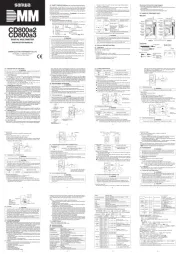
22 Juni 2025
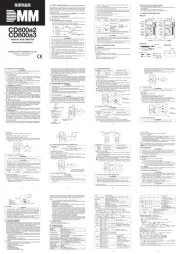
22 Juni 2025

7 December 2024

6 Januari 2024

6 Januari 2024

6 Januari 2024

6 Januari 2024

5 Januari 2024

5 Januari 2024

5 Januari 2024
Handleiding Multimeter
- Sonel
- Gembird
- Stanley
- Jung
- Owon
- Etekcity
- Cosinus
- Högert
- Topex
- Flir
- Klein Tools
- Strex
- Elworks
- Weltron
- Appa
Nieuwste handleidingen voor Multimeter
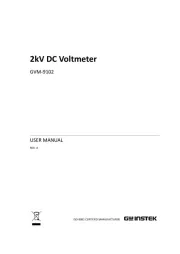
8 September 2025
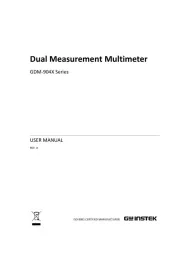
8 September 2025
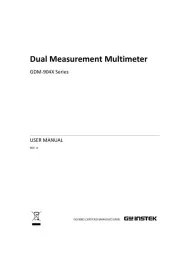
8 September 2025
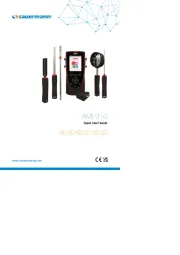
1 September 2025
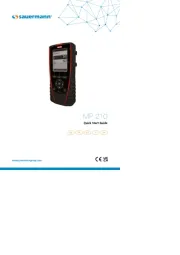
1 September 2025
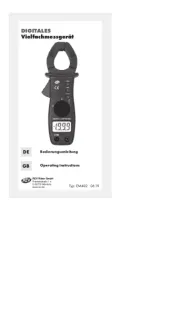
30 Augustus 2025
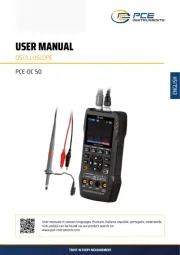
25 Augustus 2025
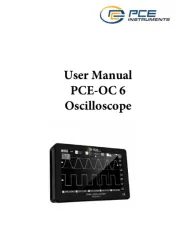
25 Augustus 2025
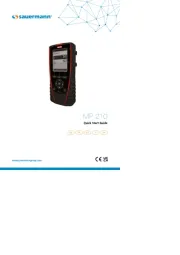
14 Augustus 2025
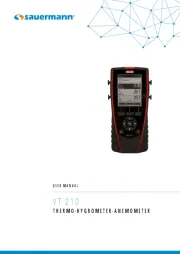
14 Augustus 2025